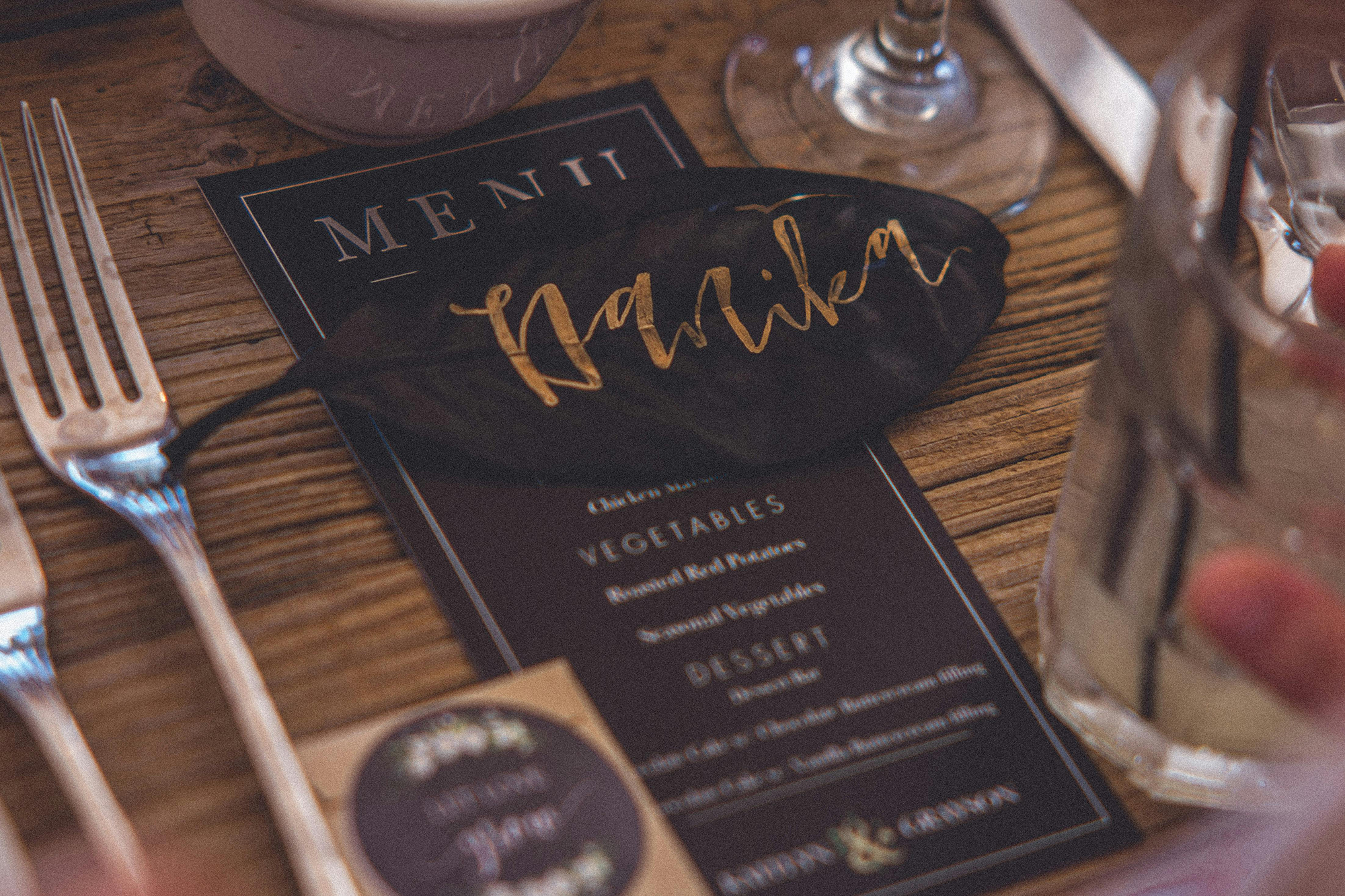Creating a seasonal menu is a powerful strategy to keep your restaurant’s offerings fresh, exciting, and perfectly aligned with what customers crave throughout the year. A well-executed seasonal menu not only highlights the best ingredients but also attracts new customers and keeps regulars coming back. Whether you’re preparing for the winter months, festive holidays, or simply updating your offerings with the changing seasons, mastering the art of seasonal menu creation is essential for any successful food and beverage (F&B) business. Here are expert tips to help you craft a seasonal menu that attracts and delights customers year-round.
1. Embrace Seasonal Ingredients
When planning a seasonal menu, focusing on fresh, in-season ingredients is key. Seasonal produce not only tastes better but is also more cost-effective, allowing you to offer high-quality dishes at competitive prices. Seasonal menus demonstrate that your restaurant values freshness, quality, and sustainability, which are highly appealing to today’s discerning diners.
Benefits of Seasonal Ingredients:
- Enhanced Flavour: Ingredients at their peak offer superior taste, making your dishes more vibrant and appealing. Fresh produce enhances the overall quality of your menu and leaves a lasting impression on customers.
- Cost Efficiency: Seasonal produce is typically more abundant and less expensive, helping control food costs. This allows you to maintain profitability while offering premium dishes.
- Sustainability: Using local, in-season ingredients reduces your carbon footprint and supports local farmers, aligning with the growing consumer demand for sustainable dining options.
F&B Example: The River Café
The River Café in London emphasises seasonal cooking, often updating its menu to highlight the freshest ingredients available. From summer’s ripe tomatoes to winter’s hearty root vegetables, their commitment to seasonal produce sets them apart and consistently draws in loyal patrons.
2. Tap into Festive Opportunities
Seasonal menus shine brightest during festive occasions like Christmas, Valentine’s Day, or Easter. Incorporating festive themes into your holiday menu planning not only appeals to the seasonal spirit but also makes your restaurant a sought-after destination for special celebrations. Highlight signature festive dishes, unique holiday cocktails, or special desserts that capture the essence of the season.
Ideas for Festive Menus:
- Christmas Specials: Offer holiday classics with a twist, such as a roast with unique herb blends or a festive-themed dessert. Festive dishes bring a sense of tradition and excitement to your menu.
- Themed Drinks: Create a special holiday cocktail menu featuring festive flavours like cinnamon, cranberry, or spiced rum. Seasonal drinks add a fun and memorable touch to the dining experience.
- Family-Style Offerings: During holidays, offer family-sized portions that encourage group dining and make your restaurant feel like a home away from home.
F&B Example: Dishoom’s Festive Menus
Dishoom, known for its seasonal pop-ups and special festive menus, adds limited-time dishes during Christmas, complete with themed decor. Their “Christmas Feasts” featuring dishes like turkey raan and festive chai create an unforgettable dining experience that draws crowds every holiday season.
3. Offer Limited-Time Specials
Limited-time specials are a fantastic way to generate excitement around your seasonal menu. These exclusive dishes create a sense of urgency, encouraging customers to visit before the opportunity passes. From winter warming soups to refreshing summer salads, limited-time offerings add variety to your menu and keep customers intrigued.
Benefits of Limited-Time Specials:
- Creates Buzz: Limited availability creates excitement and urgency, driving customers to try new dishes. These specials can become highly anticipated seasonal highlights.
- Increases Foot Traffic: Specials can attract both new customers and regulars looking for something different. They offer a great way to refresh your offerings without a full menu overhaul.
- Allows Experimentation: Test new dishes without committing them to your permanent menu, gauging customer response. This trial approach helps refine dishes before making them a staple.
F&B Example: Shake Shack
Shake Shack regularly introduces limited-time specials such as seasonal shakes and burgers that reflect the flavors of the season. Their Pumpkin Spice Shake, for instance, draws significant attention every fall, turning a simple beverage into a much-anticipated seasonal event.
4. Adapt to Customer Preferences
Understanding your customers’ preferences is crucial when designing a seasonal menu. Seasonal cravings often shift with the weather—diners might seek hearty comfort foods in winter and lighter, fresh options in summer. Analyzing past sales data, gathering customer feedback, and observing trends can help tailor your menu to meet these evolving tastes.
Adapting Your Menu to Seasonal Preferences:
- Winter Comforts: Offer rich, warming dishes like stews, roasts, and hot desserts to satisfy colder season cravings. Comfort foods provide the hearty warmth that diners seek during colder months.
- Summer Freshness: Highlight light, refreshing options such as citrus-based salads, seafood dishes, and chilled desserts. These dishes appeal to the desire for lighter, refreshing meals in warm weather.
- Spring and Fall Transitions: Use transitional ingredients like asparagus in spring or squash in fall to bridge between seasons. These dishes can provide a perfect balance as the weather changes.
F&B Example: The Ivy Collection
The Ivy Collection restaurants tailor their menus to the season, offering rich, slow-cooked casseroles in the winter and light, zesty dishes in the summer, ensuring their menu resonates with seasonal customer preferences and keeps diners coming back.
5. Keep Your Menu Flexible
Ingredient availability can be unpredictable, making flexibility key when designing a seasonal menu. A flexible menu allows you to adapt quickly to changes in supply without compromising on quality. Being responsive to ingredient availability, market trends, and customer feedback will help you maintain a dynamic and engaging menu.
Strategies for Maintaining Flexibility:
- Feature Rotating Dishes: Regularly update dishes based on what’s fresh and available from suppliers. Rotating specials keep the menu fresh and allow for creativity.
- Alternative Ingredients: Have backup ingredients ready to replace any that are out of stock without altering the dish significantly. This approach ensures consistency even when certain items are unavailable.
- Test and Tweak: Use feedback to quickly adjust underperforming dishes, swapping ingredients or altering recipes as needed. Continuous tweaking keeps your menu performing at its best.
F&B Example: Ottolenghi
Ottolenghi restaurants in London keep their menu flexible by sourcing fresh produce daily and adjusting dishes based on availability. This approach not only ensures the highest quality but also keeps the menu exciting and ever-evolving.
6. Enhance Presentation and Ambiance
The visual appeal of your dishes and the ambiance of your restaurant significantly impact the overall dining experience. A beautifully presented dish can elevate a meal from ordinary to extraordinary, while a thoughtfully designed restaurant space can make customers feel welcomed and comfortable. Seasonal presentation and decor not only enhance the dining experience but also create memorable moments that resonate with your customers long after their visit.
Enhancing Seasonal Presentation
- Garnishes and Finishing Touches: Use garnishes that reflect the season, such as edible flowers in spring, fresh herbs in summer, or cinnamon and cranberries in winter. These small touches can make dishes visually appealing and aligned with the seasonal theme.
- Seasonal Plateware and Serving Styles: Consider using seasonal-themed plateware, like rustic ceramics for autumn or bright, minimalist designs for summer. Unique serving styles, such as shared platters or creative plating techniques, can also make dishes more enticing.
- Themed Menu Design: Update your menu design to reflect the season with seasonal colours, fonts, and imagery. A visually appealing menu can set the tone for the dining experience and make customers excited to try your seasonal offerings.
Aligning Ambiance with the Season
- Seasonal Decor: Decorate your space with elements that match the season, such as cosy blankets and warm lighting for winter, or vibrant floral arrangements and open-air seating for summer. Seasonal decor can transform your restaurant into a welcoming, immersive experience.
- Music and Lighting: Adjust music and lighting to suit the seasonal mood. Soft, warm lighting and calming music can create a cosy winter atmosphere, while bright lighting and upbeat tunes can enhance a lively summer vibe.
F&B Example: The Ivy Asia
The Ivy Asia creates an immersive dining experience by changing its decor and ambiance to reflect different seasons and cultural themes. With vibrant cherry blossoms in spring and deep, rich colours in autumn, the restaurant’s ambiance enhances the overall experience and complements the seasonal menu.
7. Promote Your Seasonal Menu Effectively
Creating a buzz around your seasonal menu is essential to attract customers and generate interest in your new offerings. Effective promotion can be the difference between a successful seasonal launch and missed opportunities. Use a combination of online and offline marketing tactics to reach a broader audience and keep your regular customers engaged.
Promotion Tips for Seasonal Menus
- Social Media Campaigns: Leverage platforms like Instagram and Facebook to showcase your seasonal dishes with high-quality images and videos. Use stories, live streams, and reels to give a behind-the-scenes look at the menu creation process, engaging your audience and building anticipation.
- Email Marketing: Send out newsletters to your subscribers highlighting new seasonal dishes, exclusive offers, and special events. Include visually appealing images and compelling descriptions to entice readers to visit your restaurant.
- Influencer Partnerships: Collaborate with local food influencers to promote your seasonal menu. Invite them to try your new dishes and share their experiences on social media, reaching a wider audience and adding credibility to your offerings.
- In-House Promotions: Use table tents, posters, and digital screens in your restaurant to promote your seasonal menu. Encourage staff to mention the seasonal specials to guests, ensuring they are aware of the new offerings.
F&B Example: Hawksmoor
Hawksmoor, a UK-based steakhouse chain, effectively promotes its seasonal specials through social media campaigns and email newsletters. Their promotions are visually appealing and strategically timed, creating anticipation and driving customers to try their limited-time dishes.
FAQs
Why is creating a seasonal menu important for F&B businesses?
Seasonal menus keep offerings fresh and exciting, attract new customers, and make the most of high-quality, cost-effective ingredients that are in season.
How can I effectively use seasonal ingredients in my menu?
Focus on sourcing fresh, local produce at its peak. Highlight these ingredients in dishes that showcase their best qualities, enhancing flavour and appeal.
What are some festive menu ideas for F&B businesses?
Offer holiday-themed dishes, such as a unique Christmas roast or special festive desserts, and create themed drinks that capture the spirit of the season.
How can I ensure my seasonal menu remains flexible?
Design your menu to accommodate ingredient changes and be prepared to substitute when necessary. Regularly update your offerings based on availability and feedback.
What are the best ways to promote a seasonal menu?
Utilise social media, email newsletters, and in-restaurant promotions to create buzz. Highlight seasonal specials with high-quality images and exclusive offers.
How does enhancing presentation and ambiance improve the customer experience?
Thoughtful presentation and seasonal decor create a memorable dining environment that complements your menu, enhancing the overall experience for customers.
Conclusion: Master Seasonal Menus for Year-Round Success
Mastering seasonal menu creation is essential for keeping your offerings fresh and exciting, attracting new customers, and delighting regulars. By embracing seasonal ingredients, tapping into festive opportunities, and offering limited-time specials, you can create a dynamic menu that resonates with customers throughout the year.
Ready to elevate your menu creation strategies? Here’s how Consult Nadia can support you:
- Menu Engineering Service: Optimise your menu with our comprehensive service that enhances profitability and customer experience through professional redesign and seasonal insights.
- Seasonal Menu Planning Guide: Access expert tips and templates to effortlessly plan and implement seasonal menus that attract and satisfy your customers.
- Additionally, join our Masterclass for in-depth strategies to boost profitability, optimise operations, and create unforgettable customer experiences that set your restaurant apart.





